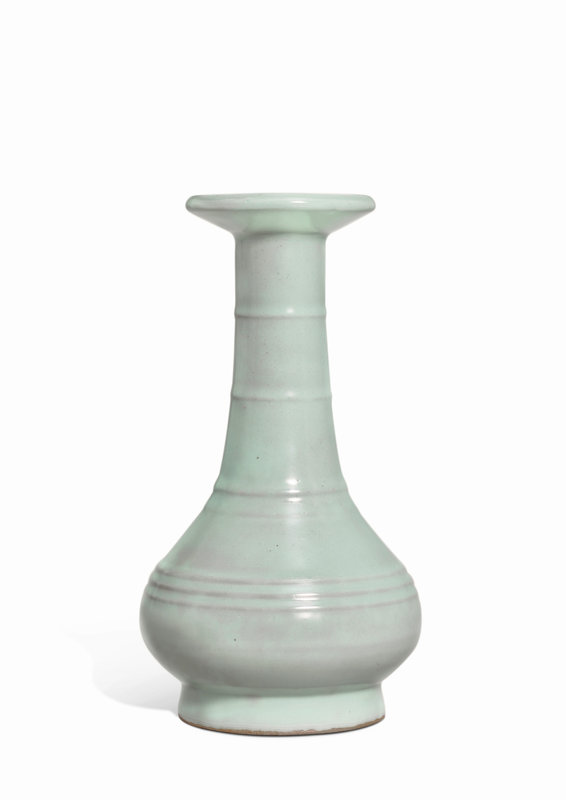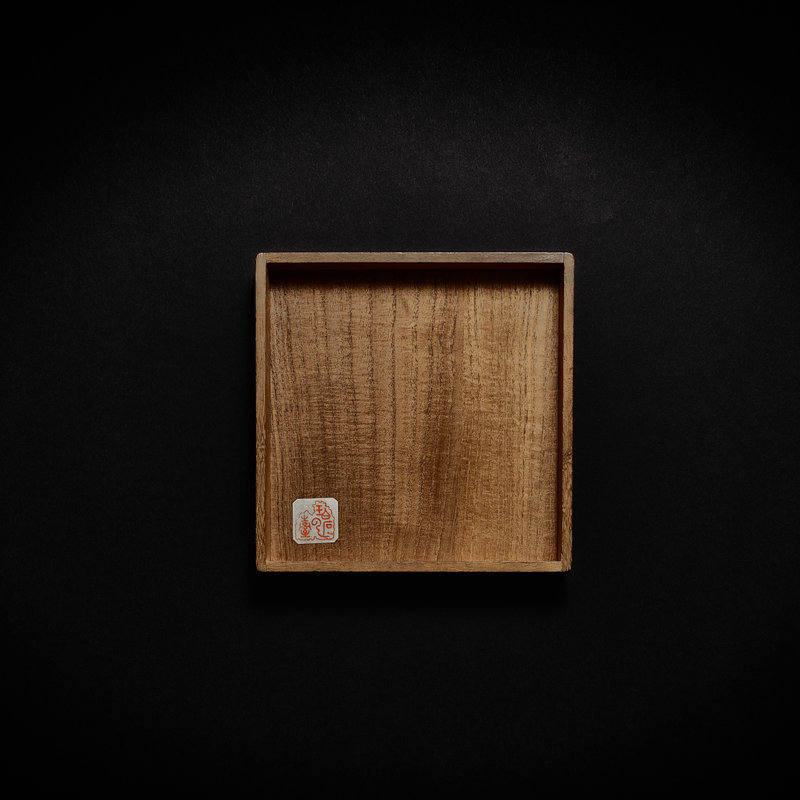A rare Longquan celadon 'bamboo-neck' vase, Southern Song dynasty
Lot 2520. Property of a Gentleman. A rare Longquan celadon 'bamboo-neck' vase, Southern Song dynasty (1127-1279); 30.2 cm, Japanese double wood box, with one of the boxes and a furoshiki wrapping cloth inscribed with Hekiundai (碧雲台, the residence of Baron Masuda Takashi). Lot Sold 3,048,000 HKD (Estimate 1,500,000 - 2,000,000 HKD). © Sotheby's 2023
Note: Exquisitely potted and glazed overall in an attractive luminous bluish-celadon glaze, this vase represents one of the masterpieces of the Longquan kilns produced during the Southern Song period. Its elegant silhouette, with a compressed globular body surmounted by a tall, slender neck and further accentuated by the raised ribs simulating bamboo, displays the aesthetic that prevailed at its time. The drastic political shift during the early Song dynasty from a society ruled by the hereditary aristocracy to one governed by a central bureaucracy of highly educated scholar-officials had a major impact on the arts of the period. Furthermore, the resulting rise of Neo-Confucian ideals led to an increased interest in antiquities and a revival of archaic jade and bronze forms that Song potters adapted into their repertoire. This vase is a fine example of this trend as the well-potted body is covered in a thick glaze reminiscent of luminous jade, while its unassuming form finds its origins in bronze hu vases of the Han dynasty, such as an example cast with raised ribs, in the Metropolitan Museum of Art, New York (accession no. 2007.133). Such superb examples follow the fabled guan (official) wares made in Hangzhou, suggesting that the finest Longquan pieces may have been produced as tribute wares.
A related Longquan vase of similar form and comparable presence, attributed to the Song dynasty, is preserved in the Beijing Palace Museum, illustrated in The Complete Collection of Treasures of the Palace Museum: Porcelain of the Song Dynasty (II), Hong Kong, 1996, pl. 103. See also an example excavated at a kiln site in the Longquan area, published in Longquan qingqi yanjiu [Research on Longquan celadon], Beijing, 1989, pl. 41, fig. 1; and a smaller example sold in our London rooms, 11th May 2016, lot 34.
Sotheby's. Karamono: Heirlooms of Chinese Art from Medieval Japan, Hong Kong, 9 October 2023

/https%3A%2F%2Fprofilepics.canalblog.com%2Fprofilepics%2F1%2F0%2F100183.jpg)
/https%3A%2F%2Fstorage.canalblog.com%2F03%2F02%2F119589%2F96711876_o.jpg)
/https%3A%2F%2Fstorage.canalblog.com%2F11%2F31%2F119589%2F94773502_o.jpg)
/https%3A%2F%2Fstorage.canalblog.com%2F20%2F83%2F119589%2F94772815_o.jpg)
/https%3A%2F%2Fstorage.canalblog.com%2F26%2F72%2F119589%2F75604929_o.jpg)
/https%3A%2F%2Fstorage.canalblog.com%2F59%2F60%2F119589%2F26458628_o.jpg)







/image%2F1371349%2F20240412%2Fob_a95ef1_2024-nyr-22642-0932-000-a-longquan-cel.jpg)
/image%2F1371349%2F20240412%2Fob_e4dd96_2024-nyr-22642-0930-000-a-longquan-cel.jpg)
/image%2F1371349%2F20240411%2Fob_4a5248_2024-nyr-22642-0913-000-a-longquan-cel.jpg)
/image%2F1371349%2F20240406%2Fob_f762e5_435810099-1646427029460643-74606500582.jpg)